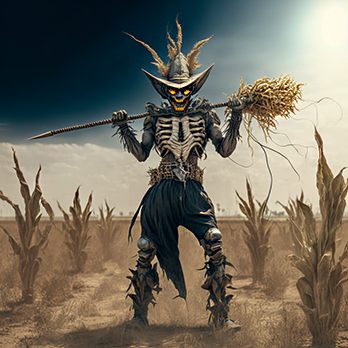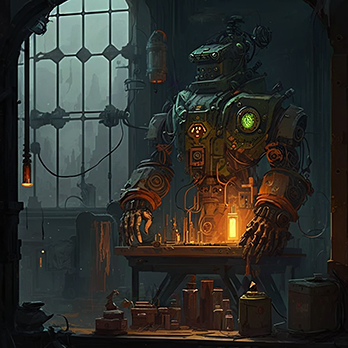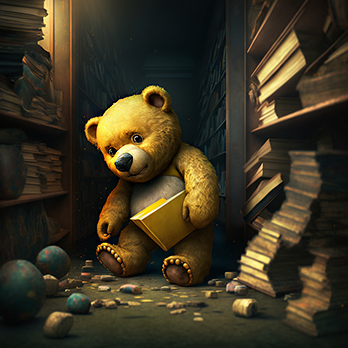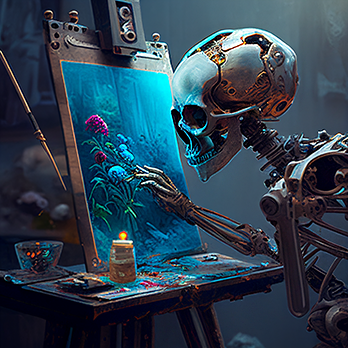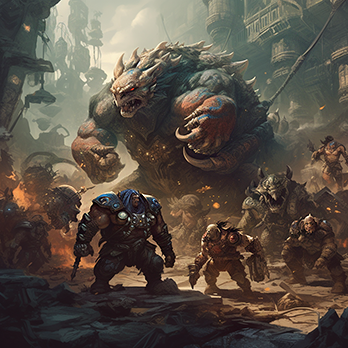Overview of Creature Constructs
In addition to the research done into plant life, the mages of Alexander work to customize animal life forms to better fit the needs of man. One of the more famous is a creature that sleeps most of the year, but wakes from hibernation at planting and harvest time to help a farmer. It is an animal whose very structure is an insectoid with digging arms every two feet, three per side, which are ideal for planting fields or harvesting same. A farmer rides the beast, keeping it on course, but newer strains have built into their very instincts the ability to plant or harvest a field unaided by a human rider. These have allowed farmers to take care of huge tracts of land thought impossible for a single man to cultivate only a few years ago.
Another of the mages' successes is the "go-all", a beast the size of a stagecoach that actually has a hollow place within it where up to four men can ride. It can run for an entire day without tiring, though it eats quite a bit of plant life. The very newest actually can derive nourishment through roots that burrow into the ground and feed it as it sleeps.
They are easy to train to go from point to point, such that a person can command one to "go to town," for example, and it will head unaided to its destination, upon which it can return home while its master sleeps. If there are any signs of danger, it will emit a loud whining noise, waking its master. There are some whose design is with a large flat place on its back for loading cargo. For many still clinging to the old superstitions of technology being evil, the go-all is the next best thing to motocarts or motomagical vehicles of other sorts. As there are those that object to magitech, still others complain that the altered beasts are an affront to nature, and that we have no right to tinker with what nature has created on its own, citing the growing suspicion that the "monsters" are mutations of natural creatures, altered by the tinkering of mankind. How correct they are they have no idea of.
With the advent of magimotive factories, the traditional role of a watchdog is more important than ever to guard warehouses from thieves. The attack dogs of the past are no match for the creatures that now are used to guard both personal residences as well as commercial installations.
The weakness that most of the beings used as guardians was all too often susceptibility to magic and fairly low intelligence, making them easy to outsmart or outgun. The specially designed Tantra has neither weakness. The mages that designed the creature will not say what creatures went into its making, though many have speculated that it is some sort of cross between a dwarf bulette and an imp of some sort. The result is a very well armored creature that moves like lightning is very intelligent (to the extent that it will follow fairly elaborate commands), and has a resistance to magic of 50%. In addition, it is a loyal pet and affectionate. For home protection, a model was created without the scaly hide, instead bearing silky long fur. The creatures have large razor sharp teeth and claws. They only measure three feet in height, where its larger cousin stands four to five feet high. They make good pets as long as care it taken to clearly define who is a friend and who is the creature's next meal. They eat a fair amount, but in the region of Alexander, meat is cheap, meat byproducts next to free.
These are just a few examples of the custom creatures created by the mages in Alexander. They belong to the Lifecrafter's Guild, which correctly sees magitech as its primary competitor. Things magitech often have an almost exact equivalent in animal form. Both approaches appeal to different people, but none can argue the usefulness of things produced from either school of thought. Even things as unusual as dishwashers and heaters can have an organic equivalent.
The downsides to organic creations are feeding, waste disposal, they often think independently, can have nasty temperaments, high upkeep costs, and they sometimes try to run away. Advantages would be less dehumanization that is often felt with magitech, they can be made to be friendly and multi-purposed, do not need technical support (greasing gears, etc.) and there is not the negative religious/social aspects that are connected with things technological.
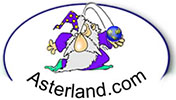
![[alt text]](/images/setting/magitech/farm-mobile-building-348x.png)
![[alt text]](/images/setting/magitech/bull-defender-348x.png)
